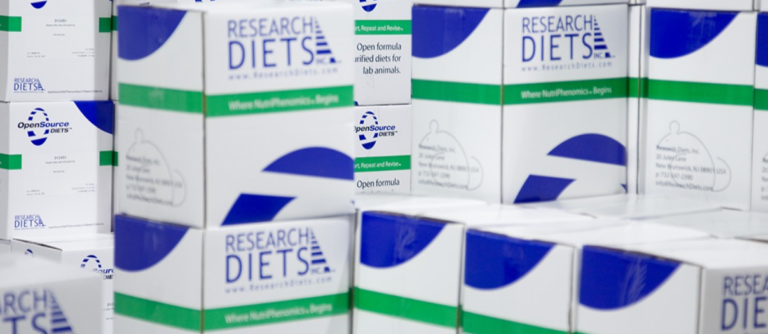- Purified Diet로, 조성표 자체가 공개되어 있으며 정제된 원료를 사용한 식이입니다.
- Chlorophyl-free diet로 in vivo imaging 연구에 용이합니다.
- 재고로 보유하고 있는 사료 이 외에, 원하시는 조성으로 주문제작 가능합니다.
- 모든 사료는 멸균하여 납품드리고 있습니다. (5KGy, 2-4시간)
- 유통기한은 제품 포장지 또는 박스에 기재되어 있으며, 제조일로부터 6개월입니다.
사료
Research Diet
Research Diets

조제사료 안내
- 12.5kg단위로 공급 가능하며, 각각 2.5kg sealing bag으로 구성되어있습니다.
- 발주 후, 납품까지 6-8주 전후 소요됩니다.
- 이메일로 조성표 보내주시면, 견적안내드리겠습니다.
Genetic and environmental factors play a role in the development of obesity, and diet is one of the main environmental factors that contributes to this disease. Human studies have shown that increased fat intake is associated with body weight gain which can lead to obesity and other related metabolic diseases. Animal rodent models are therefore useful tools for studying obesity as they will readily gain weight when fed high-fat diets.
Effect of High Fructose/Sucrose Diets on Plasma
Lipid Levels and Insulin Resistance in Rodents
Historically, the preferred small animal model for hypertension research has been the rat. is may be due to the amount of published physiological data, relative small size, and robust responses seen in some genetic strains. Because of the polygenic nature of hypertension, numerous rat models have been developed including selective bred homozygous hypertensive rat strains (e.g. spontaneously hypertensive rat [SHR] and Dahl salt sensitive [Dahl SS]) and outbred strains (e.g. Sprague Dawley) to elucidate the desired hypertensive phenotype. As the form of hypertension can differ between strains, researchers need to not only be aware of the form of hypertension that the individual strain exhibits but also the impact that a particular type of diet may have on the phenotypic response.
As with most human diseases driven by diet, fatty liver in rodents is also diet-inducible. Different dietary approaches (likely working by different mechanisms) are available and so researchers should be aware of the advantages and disadvantages of each. Here we briefly summarize three such protocols for inducing fatty liver: feeding a methionine and choline-deficient (MCD) diet, a choline-deficient diet (CD) or a high-fat diet (HFD). Of course, each of these terms does not define a specific diet formula, and the researcher should be aware that there are many variations of each of these diet groups which can have different effects on the phenotype of the animal.
Laboratory animal models are important tools in oncology research, as they allow scientists to test their in vitro-generated hypotheses in a mammalian, whole-animal system. Since many types of cancer can be affected by environmental factors, having control over these factors is key to generating reproducible, meaningful data. Research Diets products are routinely used for oncology research. OpenSource diets contain purified ingredients provide a clean background (i.e. phytoestrogen and cholorphyll-free) to reduce ‘noise’ during in vivo imaging, and easily control for factors that may impact gene expression.
Chemotherapeutics, COX-2 Inhibitors, Antioxidants, Nutraceuticals, Statins, Insulin sensitizers, NSAIDS, Doxycycline 등
Gene Expression
- Doxycycline Diet
Tetracycline-based externally regulated (Tet-based) systems are a powerful tool to study temporal expression of transgenes in vivo. Research Diets can incorporate Doxycycline into your existing purified diet or chow, providing combined genotypic and phenotypic control. Doxycycline in pelleted diet offers increased photo-stability for consistent dosing. Available in resealable vacuum packed foil bags for added protection.
- Obesity and Diabetes
Precision doxycycline supplemented diets offer significant advantages over water delivery. Combining the pelleted diet with automated watering systems can save time and reduce labor. This product is sold only for use in animal research to be conducted only under the supervision of a licensed veterinarian. Veterinary authorization is required.

